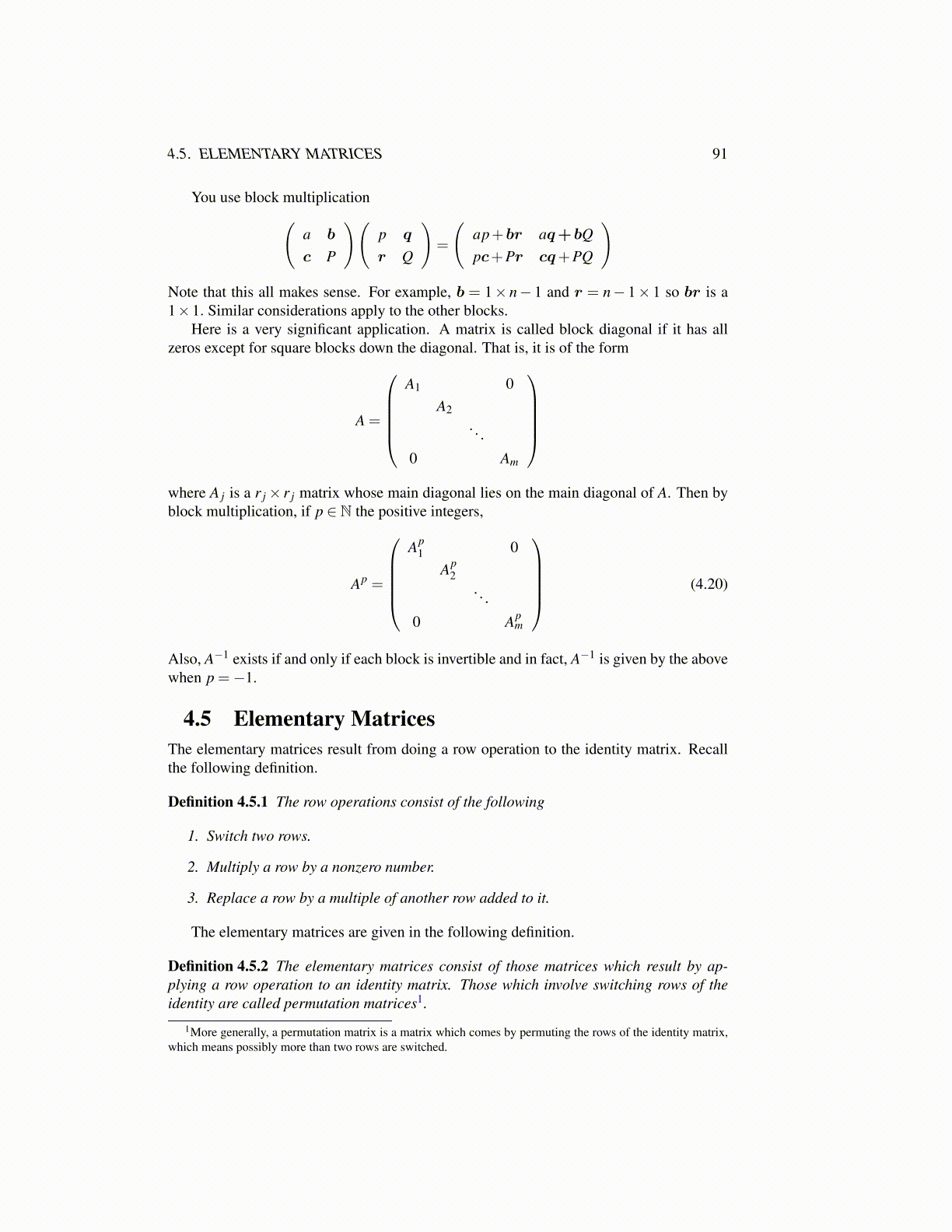
4.5. ELEMENTARY MATRICES 91
You use block multiplication(a b
c P
)(p q
r Q
)=
(ap+br aq+bQpc+Pr cq+PQ
)
Note that this all makes sense. For example, b = 1× n− 1 and r = n− 1× 1 so br is a1×1. Similar considerations apply to the other blocks.
Here is a very significant application. A matrix is called block diagonal if it has allzeros except for square blocks down the diagonal. That is, it is of the form
A =
A1 0
A2. . .
0 Am
where A j is a r j× r j matrix whose main diagonal lies on the main diagonal of A. Then byblock multiplication, if p ∈ N the positive integers,
Ap =
Ap
1 0Ap
2. . .
0 Apm
(4.20)
Also, A−1 exists if and only if each block is invertible and in fact, A−1 is given by the abovewhen p =−1.
4.5 Elementary MatricesThe elementary matrices result from doing a row operation to the identity matrix. Recallthe following definition.
Definition 4.5.1 The row operations consist of the following
1. Switch two rows.
2. Multiply a row by a nonzero number.
3. Replace a row by a multiple of another row added to it.
The elementary matrices are given in the following definition.
Definition 4.5.2 The elementary matrices consist of those matrices which result by ap-plying a row operation to an identity matrix. Those which involve switching rows of theidentity are called permutation matrices1.
1More generally, a permutation matrix is a matrix which comes by permuting the rows of the identity matrix,which means possibly more than two rows are switched.